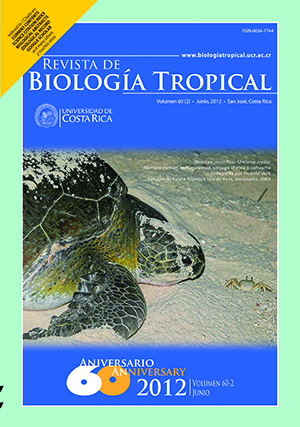Abstract
Reproductive activity of Chelonia mydas (Testudines: Cheloniidae) in Isla de Aves, Venezuela (2001-2008). The second major nesting-site for green turtles in the Caribbean is Isla de Aves, an island protected as a wildlife refuge since 1972, located at 650km Northeast from La Guaira, Venezuela. In this island, the nesting population monitoring started in 1972 and in a more continuous way after 1978, when a Scientific-Naval Station was established and scientific observations started. Since historical data show that female captures had severely affected population levels in this island before 1978, this study aim to describe recent reproductive activities. For this, during the nesting seasons of 2001-2002 and 2005-2008, nesting females were measured and tagged using metal flipper tags. A total of 458 nights were sampled observing 5 154 female emergences, with a maximum of 53 in a single night. Non-observed emergences were calculated fitting the temporal distribution of observed emergences to a normal curve. Total emergences estimated varied from =637.1±106.6 in 2001 to =2 853±42.5 in 2008 (ANOVA F(6.5df)=60.37, p<0.0001). Internesting interval in the same season was estimated in =10.71±1.32 days. Clutch frequency in a nesting season was calculated as =1.71±1.6 times per female and season. Estimated number of nesting females per year varied from =373±12.5 females in 2001 to =1 669±56.1 females in 2008 (ANOVA F (5.6df)=89.42, p<0.0001); with a positive and significant trend (r=0.842, p=0.036). Results show that nesting females numbers are increasing. We suggest that the protection of the nest- ing area for more than 30 years, has contributed with this population increase.##plugins.facebook.comentarios##

This work is licensed under a Creative Commons Attribution 4.0 International License.
Copyright (c) 2012 Revista de Biología Tropical
Downloads
Download data is not yet available.






